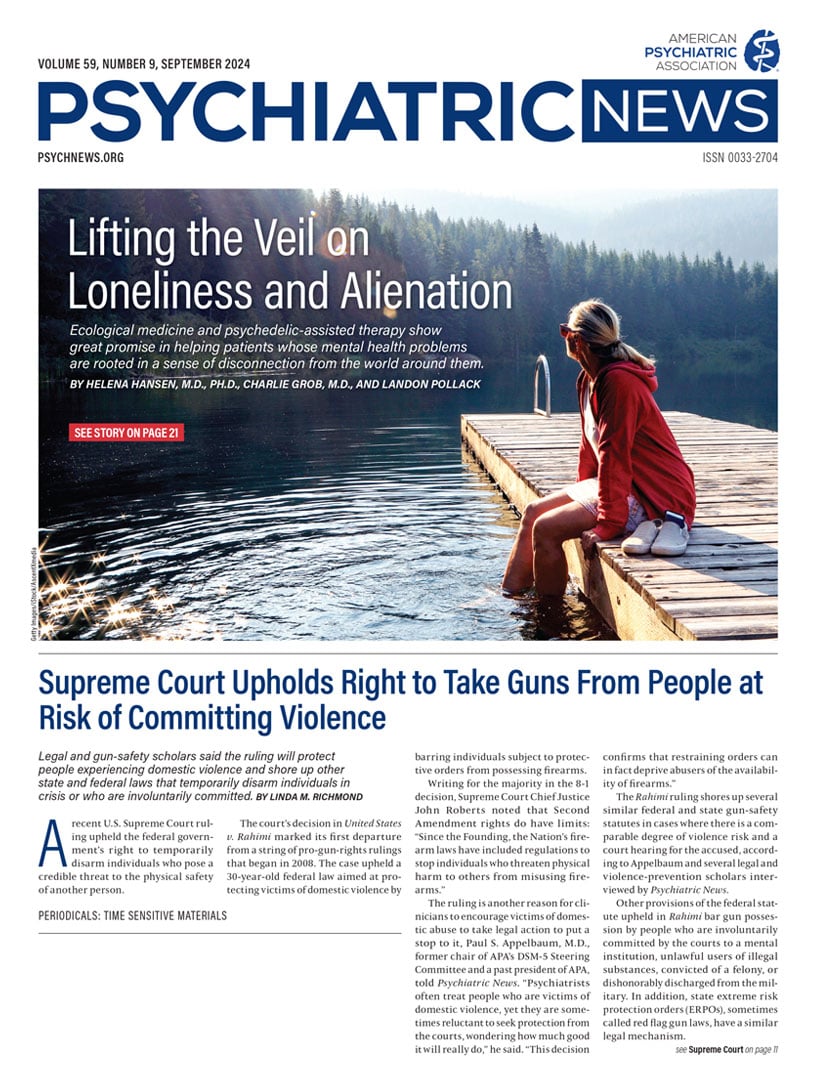Moving up or down the social ladder between childhood and adulthood may affect the risk of dementia, a
study in
JAMA Network Open has found. The results suggest that transitioning to a lower socioeconomic status (SES) increases risk whereas transitioning to a higher socioeconomic status decreases risk.
“The interventions for preventing dementia throughout the life course, including changes in socioeconomic status will become more important in the future,” lead author Ryoto Sakaniwa, Ph.D., an assistant professor in the Department of Social Medicine, Osaka University Graduate School of Medicine, told Psychiatric News. “To realize ‘healthy longevity’ in society, academic research, clinical practice, and policymaking [must] work together in an integrated approach.”
Sakaniwa and colleagues analyzed data from 9,186 participants aged 65 years or older who participated in the Japan Gerontological Evaluation Study between August 2010 and December 2016 and did not have a diagnosis of dementia when they enrolled.
At baseline, the researchers used a 30-point scale to measure the participants’ sense of coherence—that is, their feeling of confidence that their environment is predictable and that things will work out as well as can reasonably be expected. The researchers also measured dementia risk factors such as demographics (age and sex), physical characteristics and lifestyle (such as smoking, drinking, and physical activity levels), history of comorbidities (including mental illness), and social factors (receiving social support, living alone, current marital status, number of close friends, and living area).
In addition, the participants rated their socioeconomic status in response to the question “How do you rate your SES until the age of 15 years according to standards at that time?” Their responses included “very-low/low,” “middle,” and “high/very-high.” The participants then reported their education and job category as well as their pretax household income for the previous year. Using this information, the researchers were able to identify six trends in socioeconomic transitions among the participants: upward (9.3%), stable-high (8.5%), upper-middle (5.3%), lower-middle (39.3%), downward (22.6%), and stable-low (15.1%).
During a roughly six-year follow up period, 800 adults in the study cohort developed dementia. The researchers used the largest group, the lower-middle group, as a reference against which to compare the risk of dementia in the other groups and found that risk was as follows:
•
34% lower in the upward group
•
23% lower in the stable-high group
•
15% higher in the downward group
•
45% higher in the stable-low group
There was no significant association between the upper-middle socioeconomic trajectory and dementia risk.
Sakaniwa said that one finding stood out to him: The risk of dementia was lower in the upward group than the stable-high group. He noted that adults in the upward group also had the highest sense of coherence and the lowest prevalence of mental illness compared with the other groups.
“I suppose that [the upward group’s] experience of overcoming adversity throughout their lifespan and their experiences of success have led to the acquisition of high-stress-coping abilities,” Sakaniwa said. “In other words, their cognitive decline may be slower compared to their peers [via] overcoming disadvantages from childhood.”
In their analysis, Sakaniwa and colleagues also found that physical characteristics and lifestyle was a major mediator of the dementia projection in the upward group, whereas social factors were a significant mediator of dementia risk in the downward group.
This study was funded in part by the Japan Society for the Promotion of Science, the Japan Ministry of Health, Labour and Welfare, the Japan Agency for Medical Research and Development, and others. ■

